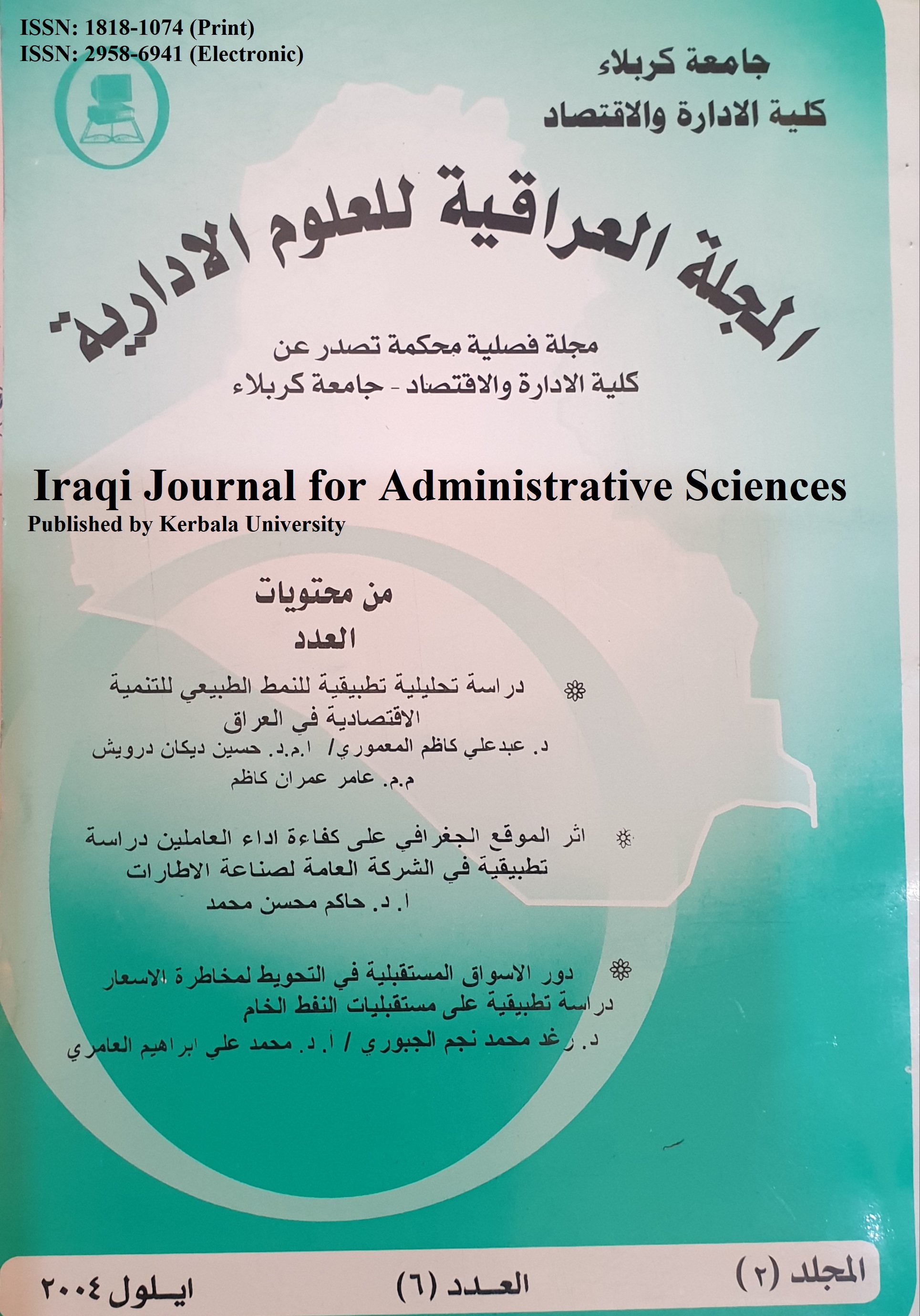An applied analytical study of the natural pattern of economic development in Iraq
Keywords:
economical developmentAbstract
The issue of choosing a development model appropriate to the conditions of developing countries and Iraq in particular has preoccupied the bodies responsible for making economic decisions, and because of their inability to come up with intellectual and theoretical frameworks stemming from the reality of these societies, this pushed them towards carrying out a process of “softening” Western propositions and models that were established according to the visions of their writers and researchers. In order to benefit from the legacy of development literature, especially the propositions of the structural school, which attempted to follow quantitative and qualitative changes in economic sectors, this research came in an attempt to use the approach of this school, which was intellectually characterized by neoclassical thought. In order to combine the foundations of economic accounting and economic efficiency to reach the optimal allocation of resources according to the references of neoclassical theory, which is based on the equality between the marginal productivity of the elements of production with the cost prices of those elements, and to call upon the variables of the external economic environment, elements outside the economic system, such as (economic blockade decisions, which clearly contributed In the decline in the rates of accumulated economic growth in general economic efficiency and productivity, including a deterioration in particular at the level of gross domestic product (GDP), passing through capital accumulation and ending with total exports.
It is these variables that are being paid attention to and are expected to act as injection factors into the economy. However, we notice an increase in the effectiveness of the factors leading to leakage within the scope of the circulation and flow of national spending, and thus the imbalance and lack of control of the overall economic balance in Iraq, especially during the last decade of the twentieth century.
What weakens the factors of injection into the Iraqi economy for the previous period is the high rates of depreciation of productive assets due to the weak possibilities of replacement and substitution resulting from the economy’s ability to provide hard currencies to finance imports of reserve tools for assets, not to mention what was caused by high employment rates in order to achieve increased supply to meet the shortage of imports. The restrictions imposed by special circumstances that the Iraqi economy has experienced over more than two decades and their cumulative effects have greatly weakened the potential for growth and development and deepened its inherited imbalances.
Downloads
Published
How to Cite
Issue
Section
License
Copyright (c) 2004 https://creativecommons.org/licenses/by-nc-nd/4.0

This work is licensed under a Creative Commons Attribution-NonCommercial-NoDerivatives 4.0 International License.
Authors retain the copyright of their papers without restrictions.




